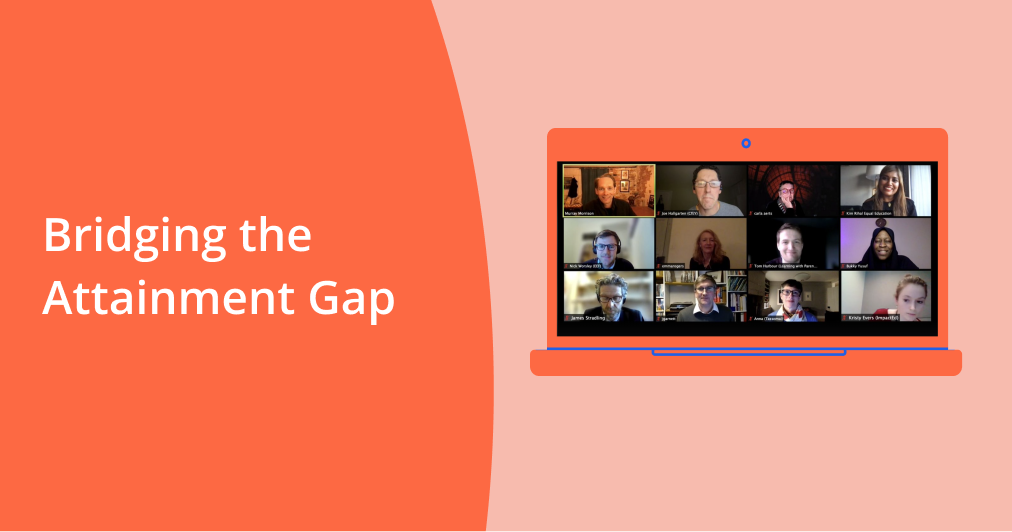Bridging the Attainment Gap: EdTech and the Struggle to Level Up
In February, Tassomai hosted an online round table event, bringing together teachers, school leaders, EdTech businesses and representatives of key education organisations to discuss how edtech software can help to narrow the attainment gap between disadvantaged students and their better-off peers.
The Tassomai team have collated the key insights and revelations from this event, publishing the results as a report for teachers and stakeholders in the education sector.
Who attended the event?
The event was chaired by the brilliant Joe Hallgarten, Chief Executive, Centre for Education and Youth. The event was also attended by:
Nick Worsley, Head of Policy, Education Endowment Foundation (EEF)
Kristy Evers, Head of Impact Partnerships, ImpactEd
James Garnett, Programme Lead - Edtech Demonstrator Delivery Partner, United Learning multi-academy trust, Peterborough
Tom Harbour, Founder and CEO, Learning with Parents
Bukky Yusuf, Senior Leader and Science Lead, Edith Kay School, London and Leadership Matters ambassador
Emma Rogers, Founder and CEO, Little Bridge
Kim Rihal, Co-founder and CEO, Equal Education
Carla Aerts, Director of Digital Change, Hodder Education
James Stradling, Head of Science, All Saints CE Academy, Weymouth
What was discussed?
The event’s discussion covered three core questions:
Can edtech personalise learning for disadvantaged children?
Can edtech data help teachers and leaders understand more about disadvantaged learners?
How can we design edtech for disadvantaged learners?
Despite drilling down into some of edtech’s current shortfalls, the tone of the discussion was one of listening and learning, with participants leaving hopeful for the future of the sector.
Challenges creating disadvantage
Before the discussion was able to focus on what changes need to be made in the education sector to benefit disadvantaged learners, the participants first had to identify the vast array of variables in play when it comes to determining which students are considered ‘disadvantaged’.
“There are so many different forms of disadvantage but for me it is fundamentally about children being hindered by circumstances beyond their control,” said one contributor. “This could be SEND, or the fact that English is your additional language. And it is important to emphasise that being ‘disadvantaged’ doesn’t mean that you have less ability than your advantaged peers.”
The role of edtech
While it is true that edtech has in some cases over-promised and under-delivered the relationship teachers and leaders have with edtech software continues to grow. The technology did some serious heavy lifting during the pandemic and that legacy will be with us for some time to come.
There was enthusiastic discussion about the role of edtech tools and their place in helping students to reinforce knowledge and undertake recall practice in order to build their confidence outside of the classroom. Tools like Tassomai can help to embed students’ knowledge of a subject’s core concept so that more time can be spent in the classroom focusing on discussion and unpacking more complicated ideas.
Our roundtable conversation emphasised the importance of inclusion and listening to a diverse range of voices when creating a product, and we hope that the insights from this report will serve as a good reminder of all that can and should be done to ensure all students are catered for when it comes to edtech software.
The report
As the creators of a learning app used extensively in schools and families, we have had many discussions with teachers, parents and students about how our product can play a part in helping disadvantaged learners achieve their potential, but we are acutely aware that there is always more we could be doing. We approached this round table event as an opportunity to listen and learn about how we can improve our current systems and be as inclusive as possible.
It’s our hope that the insights from this round table discussion will help to prepare for the years ahead as we look at narrowing the disadvantage gap and the supporting role edtech may play.
The round table event has been condensed into a short report, ‘Bridging the attainment gap: edtech and the struggle to level up’ to capture its wide-ranging and insightful discussion.
Download our free report for on edtech’s role in bridging the attainment gap here!
We are keen to ensure as many educators, and other interested parties, have a chance to read the report as possible. Please feel free to share the link to our report with anyone you feel might be interested, or share it on social media.
We are on Twitter, Facebook, Instagram and LinkedIn. If you would like to retweet one of our posts about the report.



